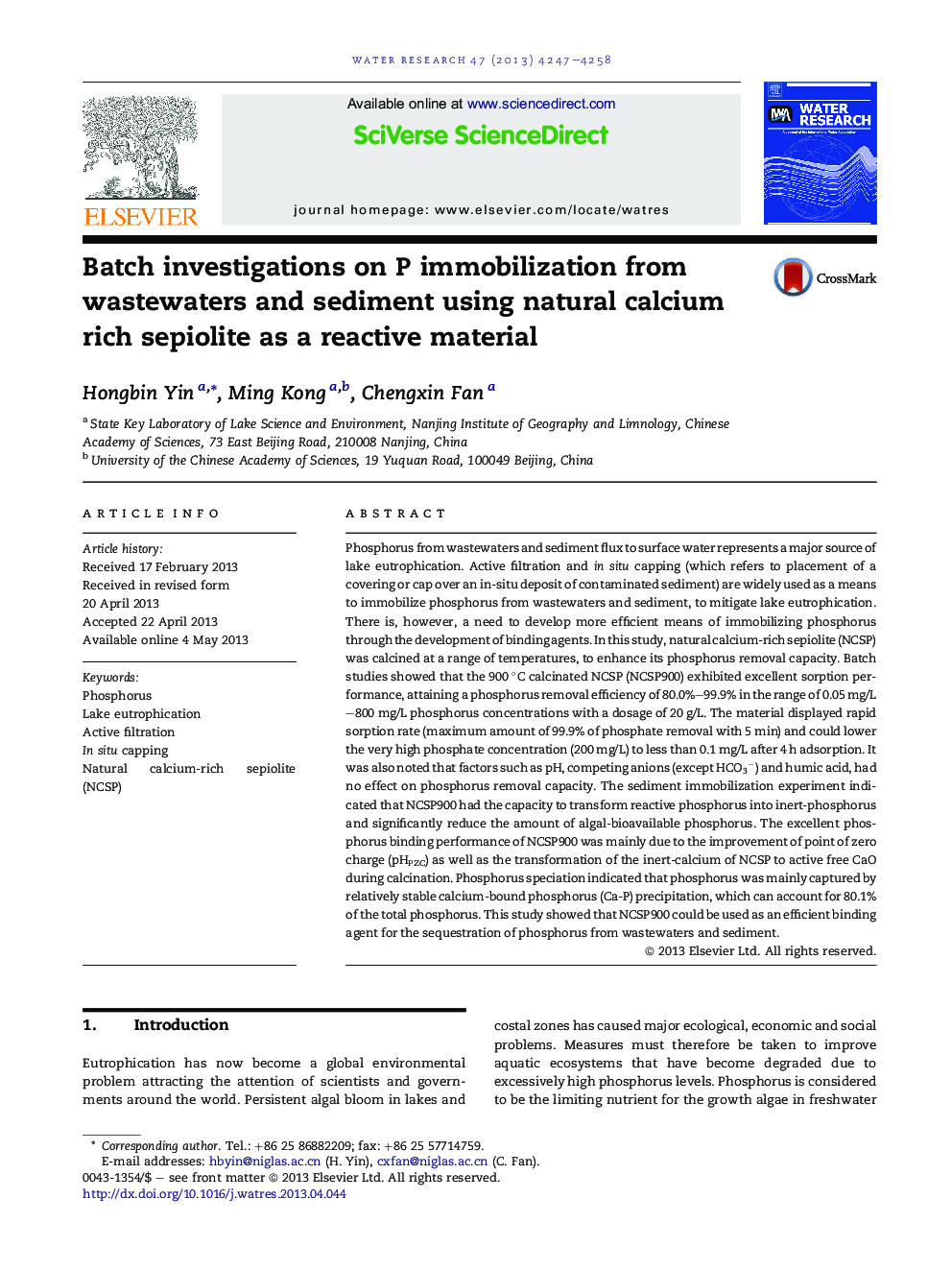| کد مقاله | کد نشریه | سال انتشار | مقاله انگلیسی | نسخه تمام متن |
|---|---|---|---|---|
| 4481973 | 1316845 | 2013 | 12 صفحه PDF | دانلود رایگان |

• Natural calcium-rich sepiolite was calcined to enhance phosphorus removal capacity.
• 900 °C calcined calcium-rich sepiolite exhibit excellent sorption performance.
• Sorption was not influenced by pH, competing anions (except HCO3−HCO3−) and humic acid.
• Calcined sepiolite could transform sediment reactive phosphorus into inter forms.
• Phosphate removed was primarily as Ca8-P and Ca10-P precipitation.
Phosphorus from wastewaters and sediment flux to surface water represents a major source of lake eutrophication. Active filtration and in situ capping (which refers to placement of a covering or cap over an in-situ deposit of contaminated sediment) are widely used as a means to immobilize phosphorus from wastewaters and sediment, to mitigate lake eutrophication. There is, however, a need to develop more efficient means of immobilizing phosphorus through the development of binding agents. In this study, natural calcium-rich sepiolite (NCSP) was calcined at a range of temperatures, to enhance its phosphorus removal capacity. Batch studies showed that the 900 °C calcinated NCSP (NCSP900) exhibited excellent sorption performance, attaining a phosphorus removal efficiency of 80.0%–99.9% in the range of 0.05 mg/L–800 mg/L phosphorus concentrations with a dosage of 20 g/L. The material displayed rapid sorption rate (maximum amount of 99.9% of phosphate removal with 5 min) and could lower the very high phosphate concentration (200 mg/L) to less than 0.1 mg/L after 4 h adsorption. It was also noted that factors such as pH, competing anions (except HCO3−HCO3−) and humic acid, had no effect on phosphorus removal capacity. The sediment immobilization experiment indicated that NCSP900 had the capacity to transform reactive phosphorus into inert-phosphorus and significantly reduce the amount of algal-bioavailable phosphorus. The excellent phosphorus binding performance of NCSP900 was mainly due to the improvement of point of zero charge (pHPZC) as well as the transformation of the inert-calcium of NCSP to active free CaO during calcination. Phosphorus speciation indicated that phosphorus was mainly captured by relatively stable calcium-bound phosphorus (Ca-P) precipitation, which can account for 80.1% of the total phosphorus. This study showed that NCSP900 could be used as an efficient binding agent for the sequestration of phosphorus from wastewaters and sediment.
Figure optionsDownload high-quality image (188 K)Download as PowerPoint slide
Journal: Water Research - Volume 47, Issue 13, 1 September 2013, Pages 4247–4258